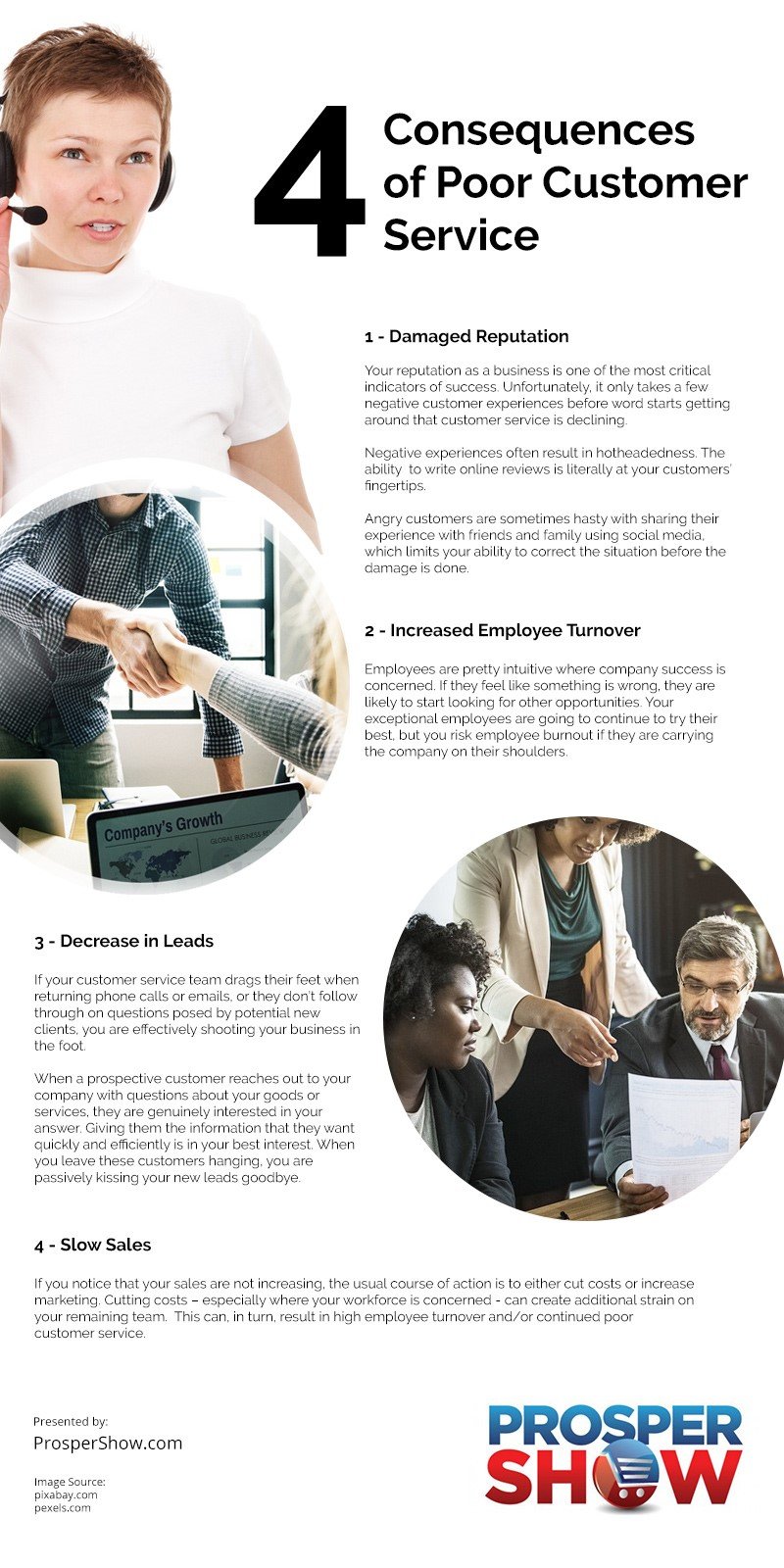Nobody likes to hear about negative consequences, but learning about these undesirable outcomes in the area of customer service can be a powerful tool in helping you make necessary adjustments to your current business practices.
Here’s a closer look at the repercussions of letting your customer service slip:
Damaged Reputation
You’ve probably heard this phrase before (or said it yourself): “(Company name) used to be my favorite place to go, but under their new management, they’ve really lost it. No one helps and no one knows what they’re doing. It’s not even worth going there anymore.”
Your reputation as a business is one of the most critical indicators of success. Unfortunately, it only takes a few negative customer experiences before word starts getting around that customer service is declining.
Negative experiences often result in hotheadedness. Unfortunately, the ability to write online reviews is literally at your customers’ fingertips. Angry customers are sometimes hasty with sharing their experience with friends and family using social media, which limits your ability to correct the situation before the damage is done.
Your best bet is to focus on customer service policies from the get-go to prevent negative experiences from happening in the first place. Letting these policies slide can impact your future and current business partnerships and customers.
Increased Employee Turnover
Employees are pretty intuitive where company success is concerned. If they feel like something is wrong, they are likely to start looking for other opportunities. Your exceptional employees are going to continue to try their best, but you risk employee burnout if they are carrying the company on their shoulders.
Meanwhile, your mediocre or subpar employees are likely to continue their current course of action for as long as they are allowed to get away with it. If their level of customer service becomes your company standard, you are likely to lose exceptional employees, as well as current and future customers.
The cost to advertise, rehire and retrain employees can put serious stress on your bottom line, especially if the new employees don’t last very long due to the poor service standards.
Drop-off in Leads
This point is specifically geared toward the apathetic or slow-moving customer service provider. If your customer service team drags their feet when returning phone calls or emails, or they don’t follow through on questions posed by potential new clients, you are effectively shooting your business in the foot.
When a prospective customer reaches out to your company with questions about your goods or services, they are genuinely interested in your answer. Giving them the information that they want quickly and efficiently is in your best interest. When you leave these customers hanging, you are passively kissing your new leads goodbye.
Slow Sales
If you notice that your sales are not increasing, the usual course of action is to either cut costs or increase marketing. Cutting costs – especially where your workforce is concerned – can create additional strain on your remaining team. This can, in turn, result in higher employee turnover and/or continued poor customer service.
It doesn’t matter if you funnel additional funds into marketing if your customer service continues to cut off your company at the knees. If your sales are still not increasing after upping your marketing budget or decreasing your costs, it’s time to take a good, hard look at your customer service team. Chances are pretty high that they are at least part of the problem.
The Takeaway
Exceptional customer service is one of the best ways to get ahead in today’s online world. Competition is high and profit margins are slim, so you have to seize an edge where you can find one.
Customers demand respect, so your company needs to have policies in place to deliver. Your reputation, employee retention, lead generation, and bottom line should be reasons enough to keep your customers happy.
Work to make your policies rock-solid and consistent, but also be willing to adjust according to customer input. Take the time to scan through your online reviews and respond to your customers’ concerns and inquiries. These reviews offer powerful insight into what your company is doing well and how it can improve.
In the event that you get a negative review, don’t fall apart. Respond with respect and try to make the situation as right as possible. This interest in your customer’s well-being can go a long way in repairing any of the damage that the original review could have caused. And if they see that you are willing to adjust and do better, they may come back more loyal than ever.



Recent Comments